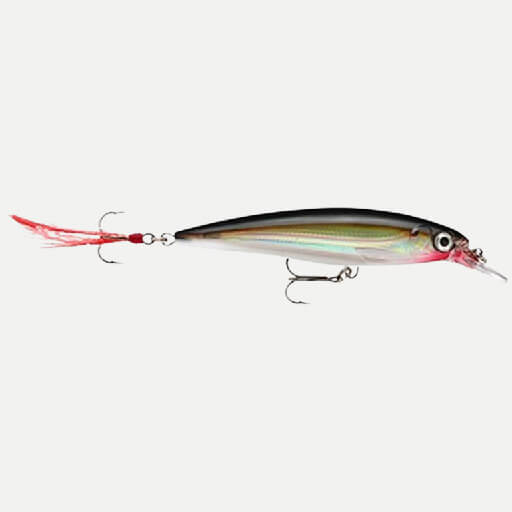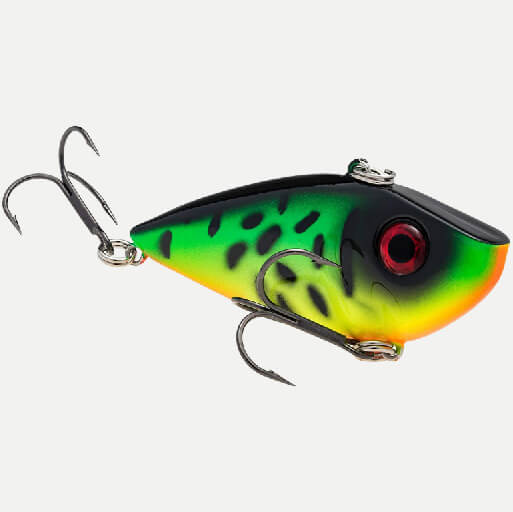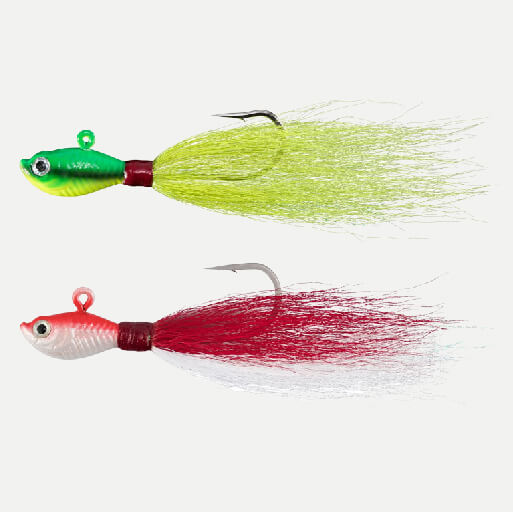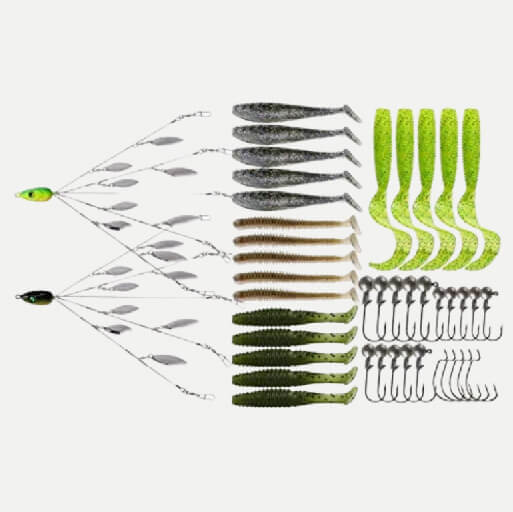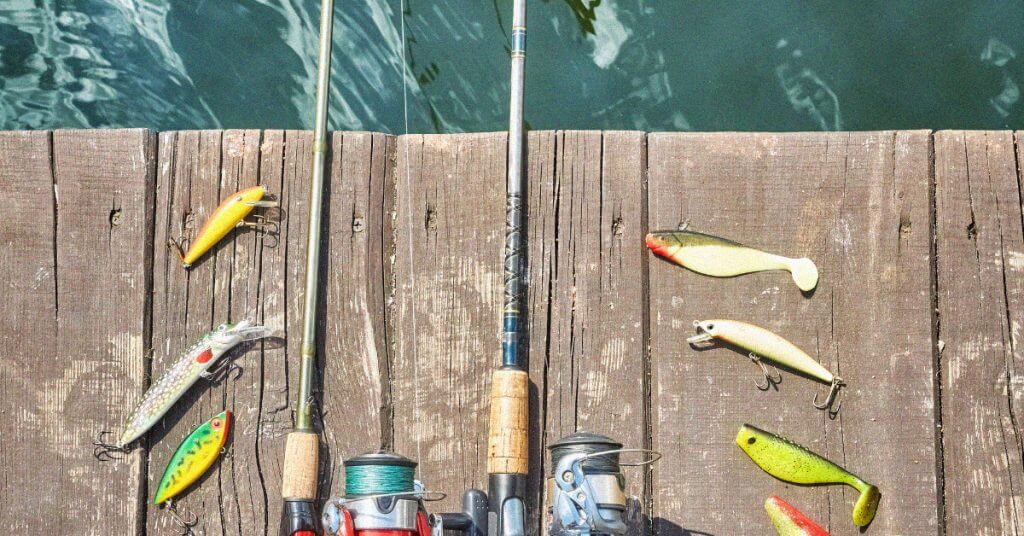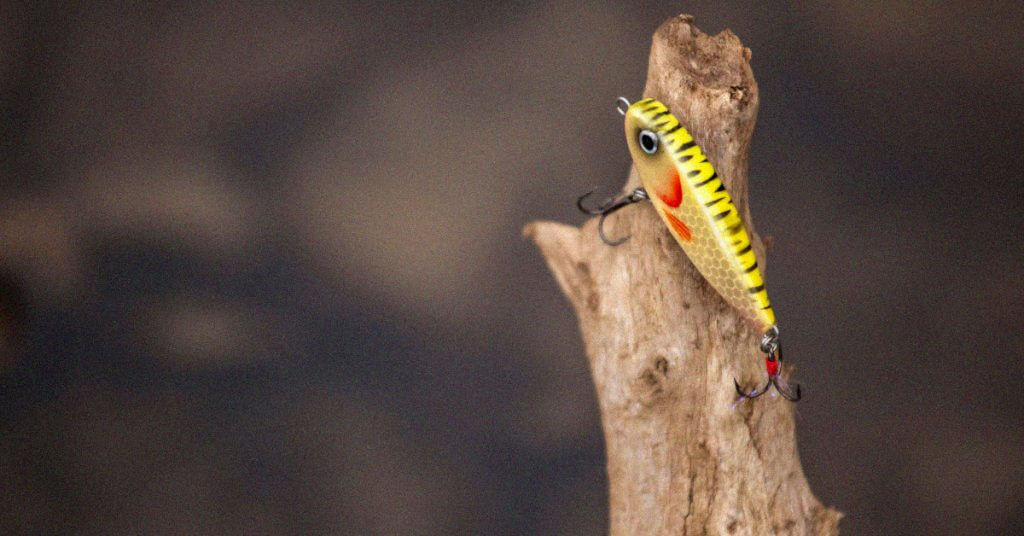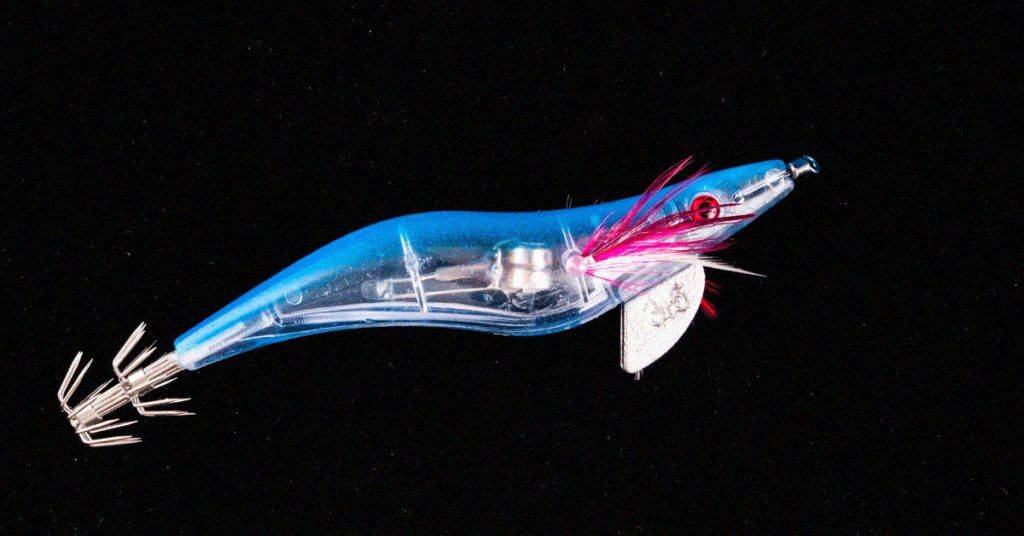We independently research, test, and recommend the best products; you can learn more about our review process here.
Winter is no excuse to get all down on yourself and let seasonal depression take over. If you have the best winter bass lures, you’ll have no problem catching bass even if you have to shovel the boat launch off yourself!
We have pretty long winters in Pennsylvania and while it doesn’t always freeze over; there is plenty of cold water fishing. So much in fact that I have two tackle boxes.
There’s one for April-October and one for November-March.
In this guide, we’re breaking down the best winter bass lures, how to work them, and some choices for you to choose from. Continue reading below for more!
Our Favorite Winter Bass Fishing Lures
1. Jerkbaits
Your typical slow moving baitfish is the best option when it comes to cold weather fishing and that’s what makes jerkbaits one of the best winter bass lures.
They move erratically and can suspend on their own for extended periods so they’re great for a stop and go presentation. Working them with a twitch and pause technique is the best way to go.
Be sure to slow down the technique based on how cold it is. The colder, the slower.
Go with a hard bodied treble hook jerkbait like the Rapala X-Rap.
2. Blades and Spoons
I think metal baits like blades and spoons are great winter bass fishing lures. The hard metal holds up well in the cold water, and they help offer the appearance of a dying baitfish.
When the water is cold, you don’t want to present a challenge to the bass. Instead, you want to make it look like they’ll get an easy meal, and imitating a dying fish is the best way to do that.
I highly recommend using vertical jigging spoons on bright and sunny days during the winter. In many areas of the country, the sun shines bright in the winter, and when light reflects off the blades, it creates a powerful presentation that can work as a double-edged sword.
You don’t want to generate too much attention because the bass might feel overwhelmed, but you want to aggravate them enough to get them to strike. Give it a try and see what works.
3. Lipless Crankbaits
Lipless cranks are definitely not my favorite choice for the best lures for winter bass but people who know more than me (bass fishing pro Kevin VanDam for instance) suggest them so I’ll roll with it.
These provide a little more aggressive presentation than I think you should in the winter.
I recommend using these when the water is in the 40-60 degree range so it’s not super cold yet but it’s cold enough to be considered “winter” fishing. The Strike King Red Eye Shad bait is the best choice according to KVD.
Some buying advice: if you’re fishing during sunny days with clear water – go ahead and grab the Red Shad in the gold sexy shad color.
4. Hair Jigs
Jigs are always good and they’re especially popular during cold weather fishing like ice fishing. When the temperature really dips though, hair jigs are a great choice.
These provide a more discreet presentation which can be perfect for extreme temps. Toss it out, let it fall, jerk it slowly, let it fall again, and repeat this process. Bucktail jigs are a good option because of their realistic appearance and their lifelike presentation.
They glide through the water nicely with their oversized skirts and they come in a wide assortment of colors. Remember to go as natural as possible with your color especially if there is snow on the ground and you’re dealing with an overcast sky.
5. Umbrella Rigs
Umbrella rigs are a highly slept-on winter bass fishing lure. The main reason a lot of people overlook them is because they don’t understand how they work and they look intimidating.
The goal of an umbrella rig is to imitate a school of baitfish.
Keep in mind that wintertime bass is opportunistic predators meaning they’ll eat even if they’re not hungry. They look for opportunities to feed when the timing is right and they think they can get an easy meal.
As a result, one small baitfish might not be enough to get them to strike. But, if they see four or five baitfish coming; they’ll see that as a better opportunity and they’re more likely to go after it.
The best choice for umbrella rigs is small willow bladed rigs.
The big bass tends to hide away in the deeper water this time of year.
6. Soft Plastics
If you’re trying to fish the bottom, you might want to go with a drop-shot or split-shot rigged with a soft plastic worm.
I’d suggest fishing a drop shot rig because you can fish them slow and determine exactly how far you want your lure to swim off the ground. I would pair my drop-shot with a soft plastic worm and troll the shoreline in a boat or fish from the shore if you have no other choice.
Soft plastics are a great choice for cold-front bass fishing. Be sure to go with natural color and size down the overall length of the worm to something six inches or smaller.
Crawfish aren’t as popular this time of year because most of the real craws are gone. The biggest bass has a much higher chance of biting worms, grubs, and shad raps during the winter months. Of course, this depends on the body of water you’re fishing and how typical cold-weather fishing is where you live.
How to Choose the Best Winter Bass Baits
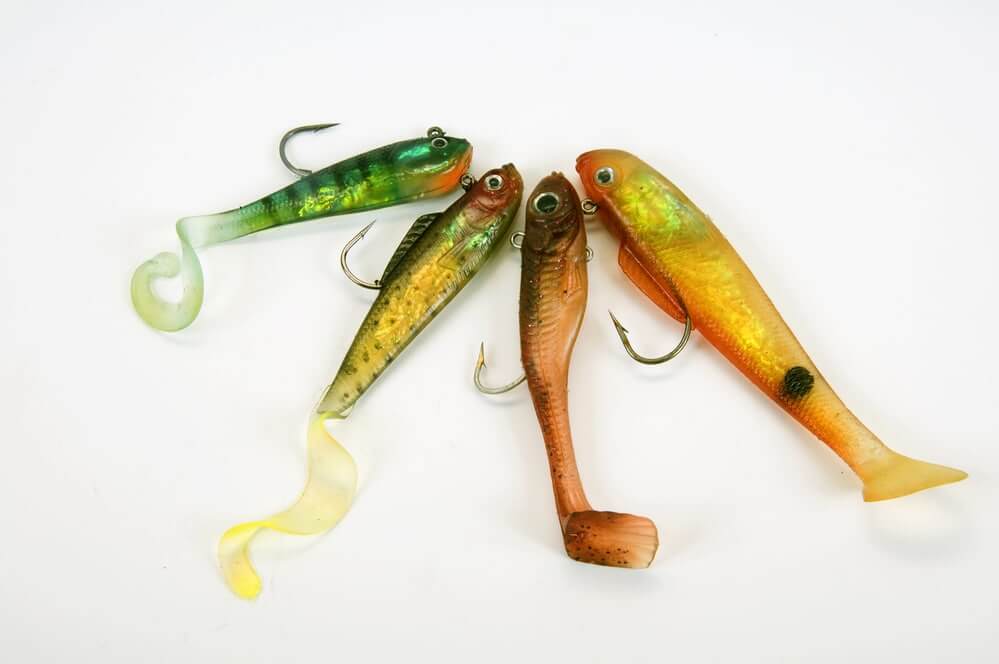
So you might be asking yourself, “which lure should I choose?” My answer to that is… it depends.
You want to have a variety of lures to choose from because you never know what will work for the situation you find yourself in.
On another note, each lake and pond provide different structures. For example, you might want to use a blade bait on a bright sunny day, but in two hours, it quickly becomes overcast, and it’s time to switch over to a soft plastic worm.
You can’t go into any fishing situation short-handed, so I highly recommend getting as many of these lures as you can so you’re always prepared. Here are some specific factors I keep in mind when filling my winter tackle box.
Lure Size
I’ve talked about it quite a bit but downsizing your lure is an important step to take during the cold weather months. Bass are more easily intimidated during this time and they’re lethargic from the colder water so they’re less likely to strike something large.
Live baits like shiners and minnows are a good option as well. I always recommend using live bait during the winter because you’re presenting exactly what the bass want and taking some of the skepticism out of the equation.
Just remember that if you’d use 3-4 inch lures before you’ll want to cut that pretty much in half when it’s cold out.
Slow Down
One of the things that have always fascinated me about fishing is understanding the science behind how bass behave. Remember that the water actually passes through the fish and warm water has a high amount of oxygen while cold water has less oxygen. Because of this, it makes the bass feel lethargic and slow.
When they’re feeling this way, they don’t consume as much, they don’t chase down baits, and they don’t fight as hard once you hook them. You want to keep your bait moving slowly and lethargically just like the bass are.
One trick that a lot of anglers use is imitating something that is struggling or dying. A twitching presentation is popular for this. The bass will think that they’ll have an easy meal on their hands and they’re more likely to take the bait.
Fish Near Runoff
I learned this tip from a lot of old-timers years ago but some of the best tips you learn come from the people who have fished the waters for a long time. There are a few reasons why fish prefer to hang out near runoff and river banks. First, the water is a bit warmer when it’s flowing.
This is why ice fishermen always tell you to pay attention if you hear running water because the ice will be thinner.
Second, runoff brings a lot of microorganisms and oxygen into the water. This not only helps the bass feed but it helps them feel better and more energetic. As a result, the bass holding to these areas will be more likely to strike and also more likely to take larger baits.
You’ll want to work your jigs and jerkbaits in these areas because they naturally imitate baitfish and the runoff helps make the presentation more effective as well.

Final Thoughts
I’ve provided you with my perspective as well as many bass fishing tips on choosing the best winter bass lures. All of the options recommended above are excellent choices and should appeal to bass anglers of all levels and locations.
The main point to remember is to slow it down and size it down.
I hope you’ve found this guide helpful and if you’d like to read further on the subject, take a look at my fishing for bass in the winter article! Here I discuss not only what lures to use but also the time of day to go out, location, where to look, etc.
Now you have an excuse to get out of the house when the weather is crappy whether it’s late winter or early spring, get to it!

